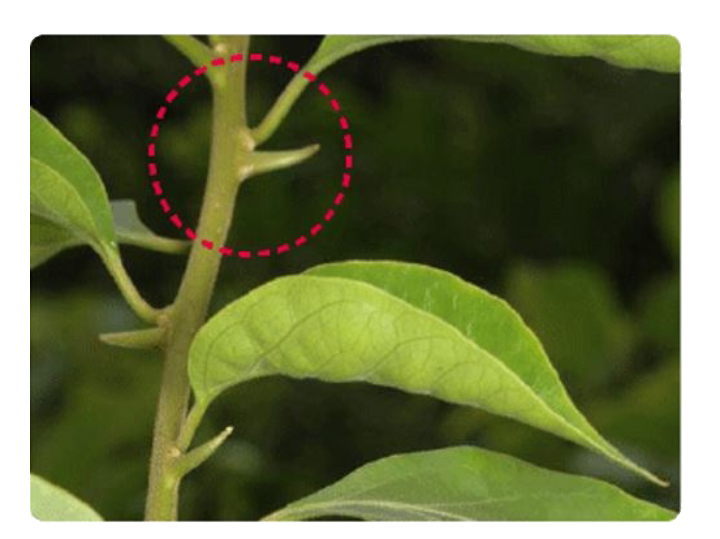Which ones show stipular modifications
(a) Spines of Zizyphus
(b) Tendrils in Smilax
(c) Tendrils in Nepenthes
(d) Spines in Argemone
(e) Thorn in Bougainvillea
a and b
a and c
b and e
c and e
The correct Answer is:a,b
To determine which options show stipular modifications, we need to understand what stipular modifications are. Stipular modifications are changes that originate from the stipules, which are small leaf-like structures at the base of a leaf stalk (petiole). Let's analyze each option step by step.
1. Understanding Stipular Modifications:
- Stipular modifications refer to changes in the stipules of a plant, which can take various forms such as spines or tendrils.
2. Analyzing Each Option:
- (a) Spines of Zizyphus:
- The spines in Zizyphus are actually modified stipules. They serve the purpose of protection for the plant.
- Conclusion: This option shows stipular modification.
- (b) Tendrils in Smilax:
- The tendrils in Smilax are also modified stipules. They help the plant in climbing and provide support.
- Conclusion: This option shows stipular modification.
- (c) Tendrils in Nepenthes:
- The tendrils in Nepenthes are modifications of the leaves, not the stipules.
- Conclusion: This option does not show stipular modification.
- (d) Spines in Argemone:
- The spines in Argemone are modifications of the leaf margins, not the stipules.
- Conclusion: This option does not show stipular modification.
- (e) Thorn in Bougainvillea:
- The thorns in Bougainvillea are modified stems, not stipules.
- Conclusion: This option does not show stipular modification.
3. Final Answer:
- The options that show stipular modifications are (a) Spines of Zizyphus and (b) Tendrils in Smilax.
Summary:
The correct answer is (a) and (b), as both represent stipular modifications.
---
- Stipular modifications refer to changes in the stipules of a plant, which can take various forms such as spines or tendrils.
- (a) Spines of Zizyphus:
- The spines in Zizyphus are actually modified stipules. They serve the purpose of protection for the plant.
- Conclusion: This option shows stipular modification.
- The tendrils in Smilax are also modified stipules. They help the plant in climbing and provide support.
- Conclusion: This option shows stipular modification.
- The tendrils in Nepenthes are modifications of the leaves, not the stipules.
- Conclusion: This option does not show stipular modification.
- The spines in Argemone are modifications of the leaf margins, not the stipules.
- Conclusion: This option does not show stipular modification.
- The thorns in Bougainvillea are modified stems, not stipules.
- Conclusion: This option does not show stipular modification.
- The options that show stipular modifications are (a) Spines of Zizyphus and (b) Tendrils in Smilax.
The correct answer is (a) and (b), as both represent stipular modifications.
Topper's Solved these Questions
- LEAFBOOK - DINESH PUBLICATION ENGLISHCHAPTER - LEAFEXERCISE - CYG
10 Videos
- KINGDOM PROTISTA (UNICELLULAR EUKARYOTES)BOOK - DINESH PUBLICATION ENGLISHCHAPTER - KINGDOM PROTISTA (UNICELLULAR EUKARYOTES)EXERCISE - CHECK YOUR GRASP
19 Videos
- LOCOMOTION AND MOVEMENTBOOK - DINESH PUBLICATION ENGLISHCHAPTER - LOCOMOTION AND MOVEMENTEXERCISE - CHECK YOUR GRASP
10 Videos
Similar Questions
Which one shows trifoliate imparipinnate compound leaf?
(a) Dolichos
(b) Hardwickia
(c) Marsilea
(d) Oxalis
View SolutionHow many of the following are examples of homologus structures in plant :
(a) Eyes of octapus and mammal
(b) Potato and sweet potato
(c) Forelimbs of whale, bat cheetah and human
(d) Vertebrate heart
(e) Thorn of bougainvillea and tendril of cucurbita
(f) Potato and corrot
(g) Potato and radish
View Solution
Knowledge Check
Which one of the following is a water soluble vitamin?
(a) vitamin A
(b) vitamin B complex
(c) vitamin D
(d) vitamin EAvitamin ABvitamin B complexCvitamin DDvitamin E
Brown hair found at the base of Pteris leaves are
(a) Modified stipules
(b) Modified leaflets
(c) Ramenta
(d) Spines
View SolutionWhich ones show physiological process called "necessary evil" (a) Potomogeton (b) Sagitteria (c) Limnophila (d) Nymphaea
View SolutionDifferentiate between the following :
Spines and Tendrils
View SolutionSelect the homologous structures from the combinations given below :
Forelimbs of whales and bats
Tuber of potato and sweet potato
Eyes of octopus and mammals
Thorns of Bougainvillea and tendrils of Cucurbita. (b) State the kind of evolution they represent.
View SolutionWrite short notes on the following:
(a) Stolon (b) Leaf tendrils (c) Cladode (d) Phyllode
View SolutionAxillary buds in the given figure of Bougainvillea gets modified into _______.

(a) Suckers
(b) stolons
(c) tendrils
(d) thorns
View SolutionMatch the following columns.
Column-I a. stem tendrils b. thorns c. leaf tendrils
Column-II (i) pumpkins (ii) citrus (iii) cucumber (iv) bougainvillea (v) peas (vi) grapevines
View Solution
